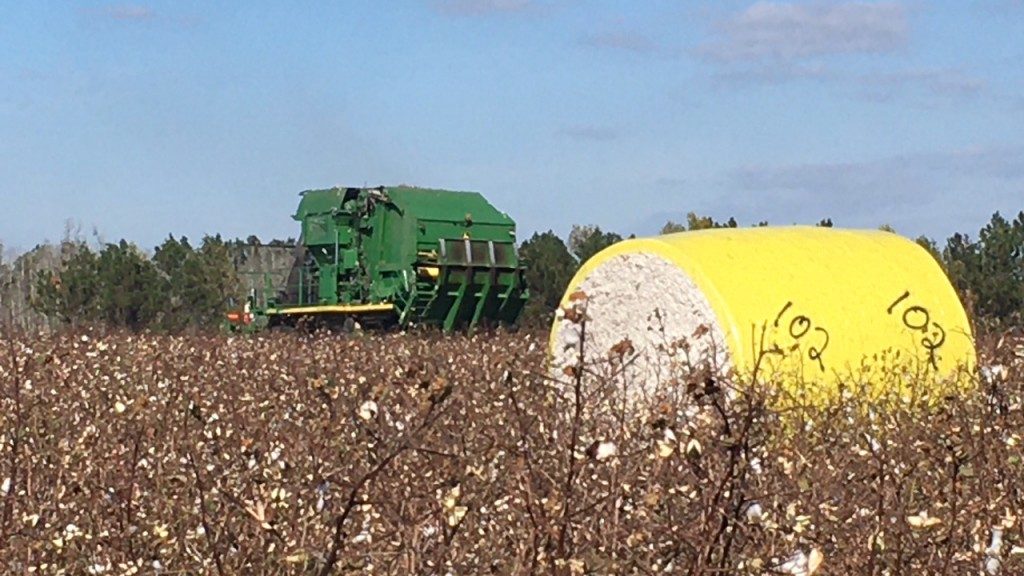As defoliation time approaches, there is one thing on everyone’s mind in the Southeast, and that is this new cotton jassid. Although I am not an entomologist, I am working closely with Dr. Roberts on this (he told me the other day that, “we in this one together boss”). I have sprayed a couple of farms here on the experiment station for jassids, and made an interesting observation yesterday (9/9/25) while I was defoliating cotton.
Many in Georgia and other states have seen the typical symptoms associated with this insect pest including the leaves turning yellow, followed by red, then leaf puckering as well. However, what I hope few people have observed is that after the leaves turn red, as symptoms progress those leaves will then go necrotic and die. This is what I want to discuss with respect to defoliation timing.
Below are two pictures that I took yesterday as I was defoliating cotton. About two to three weeks ago I noticed this farm was at threshold for jassid, and Dr. Roberts asked me to spray half of the farm and leave the other half untreated. Looking back, I didn’t think the treatment would have the impact that it did, but now I am glad that I left a check. Figure 1 is part of the farm that got sprayed with a product evaluated and recommended by Extension that was sprayed in a timely manner. Figure 2 is just across a field road and was left untreated. Same variety, fertility, irrigation, etc. Only difference is one side of the road got sprayed for jassids while the other did not. Again – I am not an entomologist… but it doesn’t take a rocket scientist to see the differences in the two pictures below.
Why is this important? I began thinking about impacts to defoliation and defoliation timing. Generally speaking, if the leaf is still living then I think we have a good chance of getting good uptake of our defoliation chemistries, resulting in good defoliation with optimum yield and fiber quality. However, as I think about how things normally go during harvest, I start to get concerned about potential impacts on defoliation and fiber quality.
Based on the recommendations generated by Dr. Roberts and his colleagues, it seems like we can preserve yield losses by protecting the cotton up to a certain point, but the major caveat is that the plant still needs to be green when you stop protecting the cotton. While this protects the top bolls in the plant with respect to yield, there are some lingering questions with respect to fiber quality. Generally, in Georgia, growers get peanuts first and then move to cotton – and while I understand why in that as long as a storm isn’t coming, cotton isn’t going anywhere and peanuts are a little more susceptible to yield losses from untimely harvest as well as labor issues, we need to have a conversation about defoliating cotton when it is ready to preserve quality with respect to jassids.
While these pests may not directly impact the fiber once the cotton is open, based on the pictures below, I believe that if cotton is left in the field during peanut harvest, which is commonly done, that leaves and plants will continue to deteriorate, which could possibly result in higher levels of trash or leaf grades, and there is even potential for extraneous matter issues. Thus, the point of bringing attention to this is to stress the need for timely defoliation, particularly where jassids are an issue! The longer they feed and build on the cotton that is left undefoliated but is ready, I believe there could be issues. None of this is certain and as Dr. Roberts has stated this is a fluid situation, but I am bringing light to this as a POSSIBILITY, which means it may not happen either.
We will keep everyone in the loop, and as always if you have questions please reach out to your local county extension agent.


